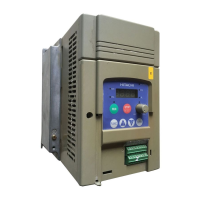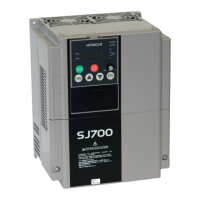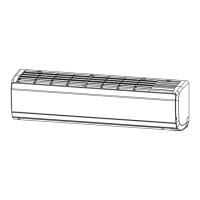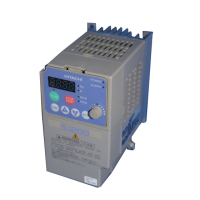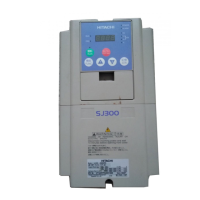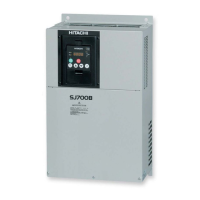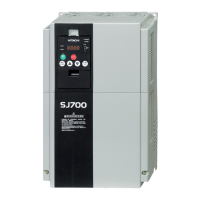Introduction to Variable-Frequency Drives
Getting Started
1–8
An inverter, in general, is a device that converts DC power to AC power. The popular
consumer power inverter is designed for powering an AC appliance from a car battery;
put 12VDC in, and get 115VAC 50/60 Hz out, for example. The figure below shows how
the variable-frequency drive employes an internal inverter. The drive first converts
incoming AC power to DC through a rectifier circuit, creating a high-voltage internal DC
bus. Then the inverter circuit inverts the DC back to AC again to power the motor.
However, this special inverter varies its output frequency and voltage according to the
desired motor speed.
The simplified drawing of the inverter shows three double-throw switches. Usually
implemented with six power transistors, outputs U/T1, V/T2, and W/T3 may switch
positively or negatively. Using a commutation algorithm, the microprocessor in the drive
switches the power transistors on and off at a very high speed to create the desired output
waveforms. The reactance of the motor windings helps smooth out the pulses.
Torque and Constant Volts/Hertz Operation
In working with industrial motors we often discuss the motor torque. That is simply the
rotational force the motor exerts at any given time. Though the goal of the inverter and
associated control system is to control motor speed, the SJ100 inverter applies direct
control to the output voltage, frequency, and current (to create a torque vector). Speed is
achieved as a function of the applied torque value and its duration, and the load which
the motor must move. If the inverter can create strong motor torque over most or all of
the speed range, then it is relatively easy for the system to achieve any desired speed.
Speed regulation is a measure of the accuracy speed control, given as a percent differ-
ence from a fixed value. In sensorless vector mode, the SJ100 delivers speed regulation
(no load to full load) within 1% of the (full scale) motor nameplate speed value.
When varying the output frequency, the inverter
drive also must vary the output voltage in
proportion to the frequency. It does so because
of the motor’s characteristic inductive
reactance. If the drive maintains a constant
volts-per-hertz ratio, the motor will have
constant torque characteristics. Constant torque
is desirable for most applications, because it
transfers power to the load consistently across
the entire speed range.
Power
Input
Inverter
L1
Motor
L2
L3
Rectifier
Variable-frequency Drive
High-voltage
DC Bus
+
+
–
U/T1
V/T2
W/T3
Converter
100%
0
V
Output frequency
f
Constant torque
Output
voltage
100%
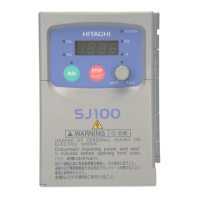
